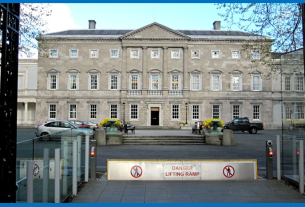|
Getting your Trinity Audio player ready...
|
As more Americans move closer to wildfire zones, fire resistive home exteriors grow in popularity. … [+]
The American Institute of Architects’ fourth quarter Home Design Trends Survey of its members reflects the need for affordable housing, resilient communities and sustainability. “The latest results—focusing on neighborhood design—found that popularity for higher-density development and mixed-use facilities continued to flourish in 2022, even with new construction slowing in all housing sectors,” the report summarizes.
Resiliency
As new home construction edges closer to wildfire zones, “demand for durable and fire resistive exteriors” grew 4% to 34% compared to 2021. “Wildfires are growing bigger, more frequent and more destructive as the climate warms,” noted Scientific American in a recent article, “Yet Americans are still choosing to migrate into fire-prone areas across the country.” Fire resistive exteriors support safety of the structure, as the University of California’s Agriculture and Natural Resources team explains, but proximity carries intrinsic risks to people, pets and homes.
To support resiliency against increasingly hotter temperatures, demand for cool roofing also grew from 15% to 24%. The Department of Energy describes cool roof benefits this way: “A cool roof is designed to reflect more sunlight than a conventional roof, absorbing less solar energy. This lowers the temperature of the building just as wearing light-colored clothing keeps you cool on a sunny day.” A cool roof can stay 50 degrees cooler than a standard version, reducing heat flow into the home. This has health and safety benefits to occupants, but can also extend roof life and reduce demand on a home’s cooling system, potentially extending its life too.
Sustainability
Cool roof benefits also increase sustainability, the DOE explains, by reducing urban heat island effects, slowing the formation of smog, cutting a building’s energy demands and even helping “offset global warming by reflecting more sunlight to outer space.”
Tear-downs decreased slightly (from 62% to 59%) and higher density development jumped from 38% to 45%. Surprisingly though, infill development dropped slightly (from 61% to 59%). It’s likely that as local governments – especially in California with its recently-passed Middle Class Housing Act – look for ways to increase affordable housing units, including with commercial rezoning to residential, that this trend will reverse in 2023 and later years’ survey responses.
More mixed-use facilities within developments jumped from 37% to 45%, with shared community remote workspaces and meeting rooms showing up for the first time (at 26%). This certainly reflects more employers allowing workers to telecommute, at least on a part-time basis, as a way to attract and retain staff. Fewer commutes potentially reduces air pollution.
In a new separate category for the survey, 36% of respondents opted for dark sky compliant lighting on exteriors. As Fairfax County, Virginia shares on its website, “Proper night sky friendly lighting lowers CO2 emission and lowers energy costs.” It also protects nature, the county’s parks staff writes: “Dark skies are vital for keeping plants and animals safe in their natural environment. Nocturnal animals are adapted to the darkness and lose their way in artificial light. Nocturnal pollinators avoid lights and those that don’t get eaten. Plants use light as a calendar so artificial light at night causes plants to leaf when they should flower and reduces crop production.”
Artificial illumination – especially blue light – also disrupts sleep. And bright lights don’t necessarily increase safety, as you might expect. “Rather, the placement, color and shielding of light needs to be done wisely to ensure safe perception of space,” the department suggests.
